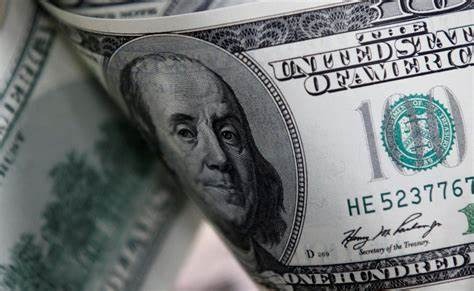

Dollar Slips as Trade War Fears Propel Yen and Swiss Franc

Image Credit: Reuters
The U.S. dollar weakened on Monday, hovering near its lowest level in four months against major currencies, as trade war concerns raised investor anxiety. Safe-haven currencies like the yen and Swiss franc gained strength amid fears of a global economic slowdown, exacerbated by U.S. trade tariffs. Investors’ confidence in the U.S. economy has eroded, reflected in a drop in net long dollar positions to $15.3 billion from $35.2 billion in January.
Risk-averse investors flocked to the yen and Swiss franc, pushing both currencies to multi-month highs. The yen was up 0.25% at 147.68 per dollar, just below its five-month high of 146.94 hit on Friday, while the Swiss franc reached a three-month peak of 0.87665 per dollar. The euro remained steady at $1.0842, bolstered by Germany's significant fiscal reforms.
The dollar index, which tracks the U.S. dollar against six major currencies, stood at 103.83, near its four-month low. The dollar had fallen more than 3% last week against key rivals, marking its weakest performance since November 2022, as concerns about tariffs and the economy took hold.
Adding to the uncertainty, President Trump, in a Fox News interview, refrained from predicting whether the U.S. might face a recession, leading to a drop in U.S. stock futures and a 3-basis point decline in the 10-year U.S. Treasury yields. This only further weighed on the dollar.
Parisha Saimbi, FX strategist at BNP Paribas, noted that if Trump is targeting a weaker dollar and lower yields, it could limit the dollar's strength. “FX investors are in a broad de-risking mode,” she added.
Investors also processed U.S. job data from Friday, which showed an uptick in job growth, but cracks are appearing in the labor market amid the ongoing trade turbulence. Nonfarm payrolls increased by 151,000 in February, but this fell short of the forecasted 160,000.
Despite this, Citi strategists suggested that the Federal Reserve would likely hold rates steady at its upcoming meeting, though they anticipate rate cuts later in the year as the labor market weakens further and economic pressures mount. Traders are currently pricing in a 75 basis point rate cut from the Fed this year, with a cut expected in June, according to LSEG data.
Paraphrasing text from "Reuters" all rights reserved by the original author

